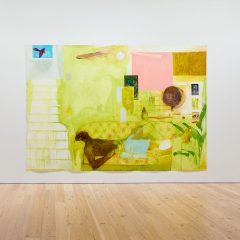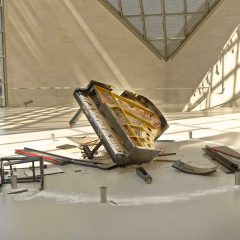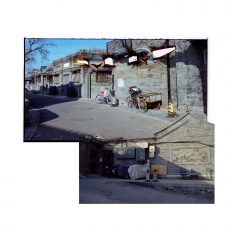Glasgow-native Susan Philipsz was awarded the Turner Prize at the Tate Britain earlier tonight for Lowlands, a sound installation featured at the 2010 Glasgow International Festival of Visual Art. The fourth woman to win the illustrious Turner Prize, Philipsz is also the first ever artist to have her sound piece garner the accolade recognizing the best in contemporary British art exhibitions. Lowlands is an incantation, the multi-channel sound piece originally haunted the undersides of three bridges in Glasgow with the shuddering song from a drowned sailor. (Read more to hear an excerpt of the winning piece…)
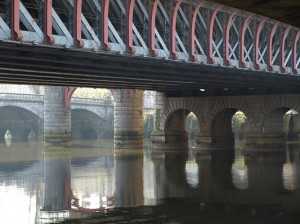
Even transplanted into the empty room of the Tate Britain, Philipsz’s sound piece preserves its haunting quality. The three simultaneous overlapping recordings of slightly differing versions of the sixteenth-century Scottish lament Lowlands Away weave together in harmony and diverge in dissonance. Originally installed under three bridges over the River Clyde in the artist’s native Glasgow, the song (of a drowned sailor returning to tell his love of his demise) served as an aural marker of the darker, seedy underbelly of the Scottish city. The purity of the melancholic sound creates a new and very visceral space to be experienced and considered. Philipsz’s short-listing and win are great achievements for sound artists and sound sculptors, bringing a field of artistic production to public attention that can harness immense power and thrive in today’s multimedia society (as in Nigel Helyer’s piece GhosTrain which I reviewed earlier this year). For more information on Philipsz’s original installation, read Susan Philipsz: Lament for a drowned love and the video on the Tate Channel.
The shortlist of the 26th edition of The Turner Prize includes Angela de la Cruz, Dexter Dalwood, and The Otolith Group.
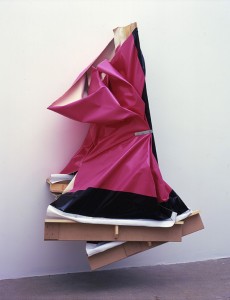
Spanish-born painter/sculptor Angela de la Cruz was nominated for her solo show After exhibited at the Camden Arts Centre. Her sculptural pieces deconstruct paintings, quite literally, remounting canvases shiny with paint on broken structures. Canvases lay folded, twist contorted, and hang down, unlikely swaths of fabric. Other pieces refigure painting and furniture in unusual forms, sometimes humorous, sometimes sad, sometimes striking.
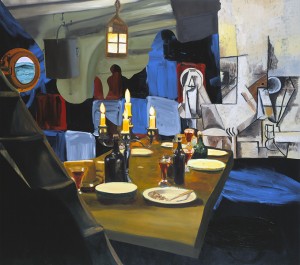
British painter Dexter Dalwood was featured for his rather unique style of painterly collage, a creative revision of history painting. Either working off descriptions or from cutout creations, Dalwood depicts imagined spaces, loaded with referents. The works are unusual; they appear to be collages but, upon closer examination, reveal their sharp edges to be the work of brushstroke.
Finally, The Otolith Group’s mission to re-examine images of contemporary society distinguished the artist collective as worthy contenders for the Turner. Otolith, nominated for the exhibition A Long Time Between Suns, brings a new approach to video art by revisiting events, both past and present, by way of original video research and reconstruction.
Turner Prize winner Susan Philipsz along with shortlisted Angela de la Cruz, Dexter Dalwood and The Otolith Group are all on view at the Tate Britain until 3 January 2011.


